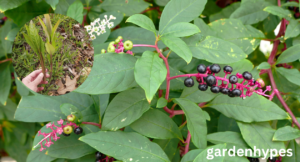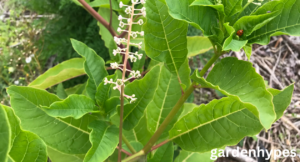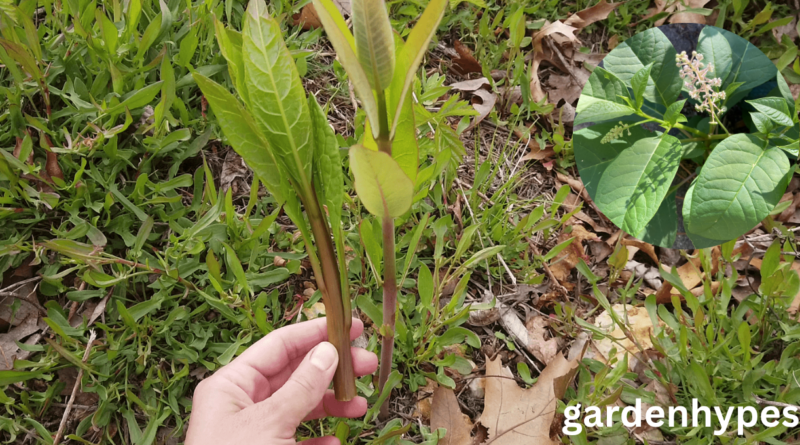Pokeweed Look-Alikes Identifying Similar Plants Safely
We’ve all been there—you’re out on a hike, walking your dog, or maybe working in your backyard, and you spot a tall, bushy plant with deep purple berries and reddish stems. The first thought? “That must be Pokeweed Look-Alikes!” But hold on. What if it’s not? What if it’s one of its many look-alikes?
In this guide, we’re diving deep into the world of pokeweed look alikes and its botanical doppelgängers. Knowing how to identify it correctly can save you from an itchy rash—or worse, a trip to the ER. Let’s take a detailed look so you can spot pokeweed (and its look-alikes) like a seasoned forager.
click in link Ugliest Flower
Introduction to Pokeweed
What is Pokeweed?
Pokeweed (Phytolacca americana) is a native perennial plant commonly found throughout the eastern and southern United States. It grows wild in fields, fence rows, and disturbed soils—basically, anywhere people aren’t tending carefully to the land. Pokeweed can grow up to 10 feet tall under the right conditions and is known for its fleshy red stems, large green leaves, and juicy purple-black berries that hang in grape-like clusters.
The plant starts growing in early spring and flowers through summer. While it’s quite beautiful—especially in the fall—it’s also highly toxic. Every part of the pokeweed plant, including the roots, leaves, stems, and berries, contains poisonous compounds. Despite this, young pokeweed shoots are sometimes foraged (with extreme care) in Southern cuisine after being thoroughly boiled to remove toxins. Still, many experts advise against consuming it at all.
Why Proper Identification Matters
Now here’s the thing: pokeweed has several look-alikes. Some are edible, some are invasive, and some are just as toxic (if not more). Mistaking one plant for another can lead to serious health issues, especially if you’re foraging, gardening, or trying to clear land.
Even wildlife don’t mess with pokeweed casually—while birds can eat the berries without harm, many mammals, including humans, can suffer vomiting, seizures, and even respiratory failure if they ingest parts of the plant. Yikes.
That’s why we’re breaking down everything you need to know about pokeweed’s characteristics and its common imposters. You’ll learn how to tell them apart with confidence.
Key Features of Pokeweed
Before you can spot a look-alike, you need to know what you’re actually looking at. Pokeweed has a few dead giveaways—if you know what to look for.
Stem Color and Shape
One of the most distinct features of pokeweed is its thick, smooth, reddish-purple stem. It often looks like it’s blushing from the ground up, especially as the plant matures in late summer. These stems are usually unbranched near the base and become more branched higher up the plant.
New shoots in spring are green, but they start turning reddish as they grow. By the time fall rolls around, you’ll be looking at deep magenta or purple stalks.
If the plant you’re examining has a woody stem or bark-like texture, it’s not pokeweed. Pokeweed’s stem is always fleshy and juicy if broken.
Leaves and Growth Habit
Pokeweed leaves are large (6–12 inches long), lance-shaped, and arranged alternately on the stem. They’re smooth-edged and typically have a slightly wavy or crinkled appearance.

click in link Ugliest Flower
The plant itself grows in a spreading, somewhat chaotic fashion—imagine a weedy shrub with a bit of attitude. It doesn’t form neat clusters or symmetrical shapes like some other plants do. It’s a little wild, which makes it easier to spot if you know the vibe.
If the leaves you’re looking at have toothed edges, opposite arrangements, or odd textures like a rubbery feel or roughness, you may be dealing with a different species.
Berries and Flower Clusters
Ah, the berries—the feature that makes pokeweed look deceivingly appetizing. These juicy, dark purple berries grow in long, drooping clusters that resemble bunches of grapes. Before ripening, the berries are green, turning red, then deep purple. Each berry contains multiple seeds, and when squished, they produce a vibrant, inky juice that was historically used as dye and ink.
The flowers come before the berries. They’re small, white to greenish-pink, and form along stalks that later bear the berries. The flower clusters are upright and stalked, appearing from late spring to summer.
Keep in mind: if the berries on the plant are tiny, round, and growing in small, upright groups (not drooping), you’re likely dealing with a look-alike.
Common Pokeweed Look-Alikes
Now that you’ve got a clear picture of what pokeweed looks like, let’s explore the plants that often get mistaken for it. This is where things get interesting—and potentially dangerous.
click in link Ugliest Flower
Elderberry (Sambucus spp.)
Similarities with Pokeweed
Elderberry is one of the most commonly mistaken plants for pokeweed, especially because of the similar-looking purple berries and the large leafy growth. Both plants can grow in wild or rural environments, often near fences or roadsides.
Like pokeweed, elderberry has compound leaves and produces dark purple berries in clusters.

Key Differences for Identification
Here’s the main difference: elderberries grow on woody shrubs or small trees, while pokeweed has a soft, fleshy herbaceous stem. If the plant has bark or feels hard and shrubby, it’s likely elderberry.
Elderberry also produces flat-topped clusters of tiny white flowers, while pokeweed’s flowers are more spaced out and grow on a single stalk. The berries on elderberry are small, uniform, and grow in dome-shaped bunches—pokeweed berries hang in elongated, droopy clusters.
Lastly, elderberry leaves are pinnately compound—meaning each leaf is made up of several leaflets—whereas pokeweed leaves are single and alternate along the stem.
Faqs
1. How Do I Remove Pokeweed Safely?
Removing pokeweed can be tricky due to its deep taproot and toxic nature. Always wear gloves and long sleeves, as the sap can irritate skin. The best method is to pull young plants by hand when the soil is moist, ensuring the entire root comes out. For mature plants, dig at least 6–12 inches deep to get the whole taproot. If any root is left behind, it can regrow. Avoid using a weed whacker—it can spray toxic sap. Never compost pokeweed; instead, bag and dispose of it with your local waste service.
2. Are Any Look-Alikes of Pokeweed Edible?
Yes, some pokeweed look-alikes like elderberry are edible—but only certain parts and only when prepared correctly. Elderberries must be cooked before eating; raw berries, stems, and leaves contain cyanogenic compounds that are toxic. American nightshade also bears edible berries in small amounts when ripe, but it’s risky for beginners. If you’re unsure, don’t consume anything. Proper identification and preparation are essential to avoid accidental poisoning.
3. Can I Grow Pokeweed on Purpose in My Garden?
Technically, yes—you can grow pokeweed, and some people do so for ornamental or ecological reasons. Its berries attract birds, and its vibrant stem adds a unique look to wild gardens. However, due to its toxicity and aggressive growth, it’s not recommended for homes with pets or children. Also, some regions consider pokeweed invasive, so be sure to check local guidelines before planting.
4. Is Pokeweed Ever Used in Medicine or Food?
Historically, pokeweed was used in traditional Appalachian medicine and as a food in very small, carefully prepared amounts. “Poke sallet” is a Southern dish made by boiling young shoots multiple times to remove toxins. However, modern medical and food safety guidelines strongly discourage using pokeweed due to the risk of poisoning. No part of the mature plant should be consumed without expert knowledge.
5. What’s the Most Dangerous Look-Alike of Pokeweed?
American nightshade is one of the most dangerous pokeweed look-alikes due to its highly toxic unripe berries and similar appearance. People may confuse the two and unknowingly ingest nightshade berries, which can cause nausea, hallucinations, or worse. Another risky one is the buckthorn species, whose berries can cause severe gastrointestinal upset. When in doubt, avoid all foraging unless you’re absolutely sure of what you’re dealing
